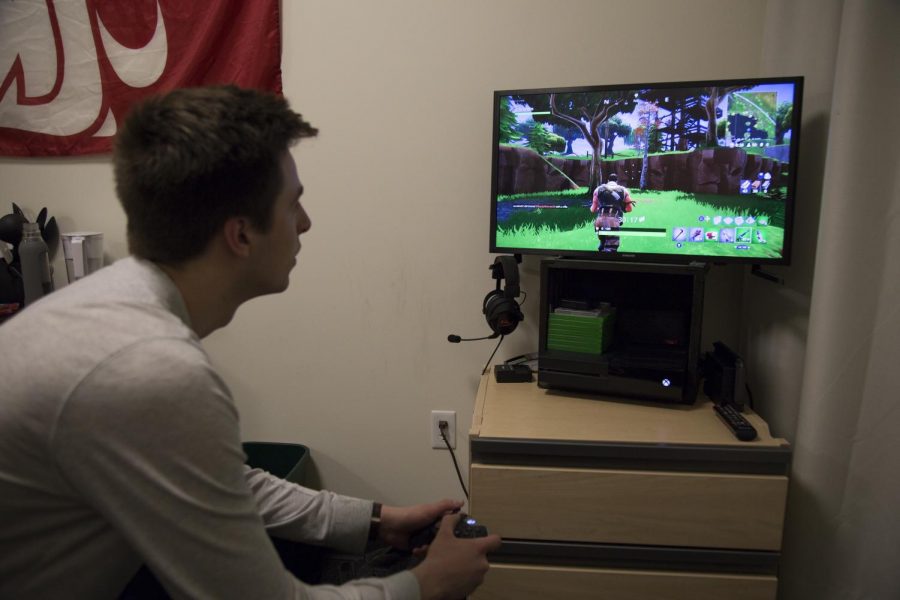Battle royale style games invade all of your friends’ brains
Fortnite, PUBG have attracted computer, console gamers
ZACH RUBIO | EVERGREEN PHOTO ILLUSTRATION
Fortnite participants want to be last standing player.
February 1, 2018
Fortnite. PUBG. League of Legends. These are the games that have come to dominate the gaming landscape, rising from the fringes of indie developments to become the most recognizable pieces of the industry. With these games where they are, it begs the question: Just what are these games?
With League of Legends, we see a game of chess on steroids. It is made up of lanes, in an arena space where player-chosen characters, each with their own strengths and weaknesses, battle for control of the arena. To say that League of Legends is a real-time strategy game would be an understatement. In that arena, it is as much about how and where you attack, as it is what you choose to attack with.
Like few games before it, League of Legends requires an extraordinary amount of communication, both during and before each match. Before the match, each team establishes its composition: What characters players will use and how they will use them. With six separate categories of character designs and playstyles, and 12 such subclasses, the team needs to be balanced between offense and defense, support and forward movement.
During the game, communication gets even more complicated.
“Using voice is the most optimal way to keep a team playing as one,” said Ansel Cochran, a computer science major who is familiar with these games. “However, the game doesn’t have a [voice chat] system built in. Instead, you get chat and pings.”
While the chat is a simple text chat, the pings are where things get interesting. Pings are markers that can be left by players across the map, to provide location-based information that can be used to coordinate the team in terms of the land battle. While they are not a replacement for chat or communication, if used well, they can provide a quick supplement to voice communication.
Yet, in comparison, the other half of this two-part piece is far less complex and relies on a lot more luck.
With the Battles Royale of PUBG, or PlayerUnknown’s Battle Grounds, and Fortnite, there is a single large map, with players dropping across it. As they land, they find a variety of weapons, medical supplies and other items, and go about shooting all other players until they are the only one left standing, in what some would think is an incredibly frustrating repetition.
“It’s important for the maps to be massive or procedurally generated,” Cochran said. “It’s also imperative that games have constant updates and balance changes.”
Outside of the standard Battle Royale mode, players can rotate through other perspectives and team-based modes, and the game itself is wired to make each match different. With each game, the weapons and loot are randomized such that players never get the same thing twice, and could easily find themselves in a far better or worse position than in the last game. Altogether, though, the game can be leveled by each player’s skill, and by the rapidly shrinking border, which forces players into corners of the map.
It’s important to note the steep learning curves of the game. Both have creators that work to help players better understand the game.
“I think the best way to get into the game is through content creators,” Cochran said. “They often show you how to play, strategies, and other tactics to get on your feet.”
This is even more true of League of Legends, which dominates the E-Sports landscape. However, Cochran said to stick to tutorials and regular livestreams.
“E-Sports for League is wildly complicated … and simply overwhelming,” he said, “as the best players in the world play at a level that is unmatched to normal players.”
Nevertheless, these games were meant to be played. Anyone who wants to get involved should start playing, not only for the fun of the game, but to make new friends or reconnect with old ones. So, go and play, and have fun.









